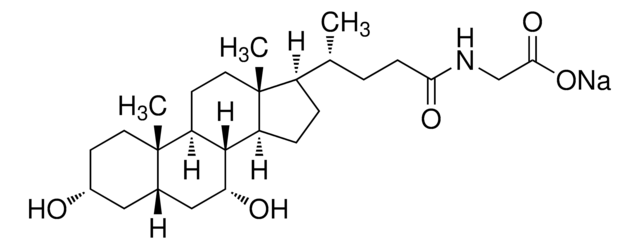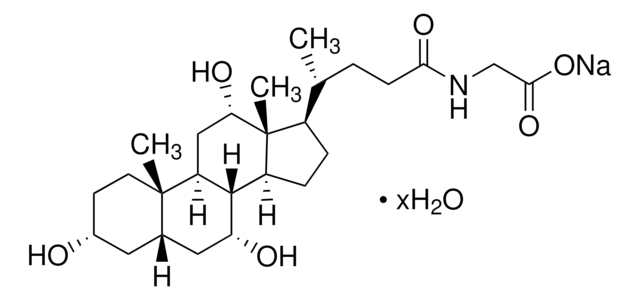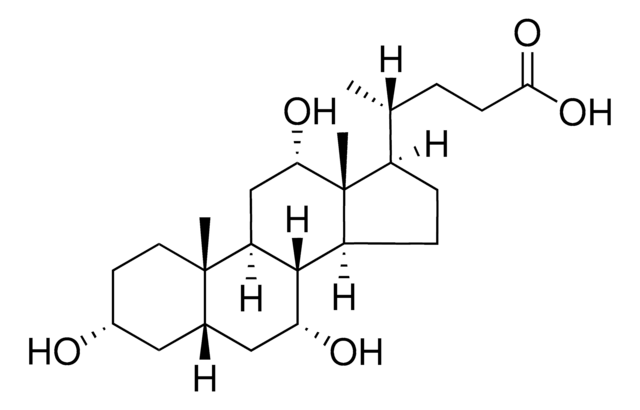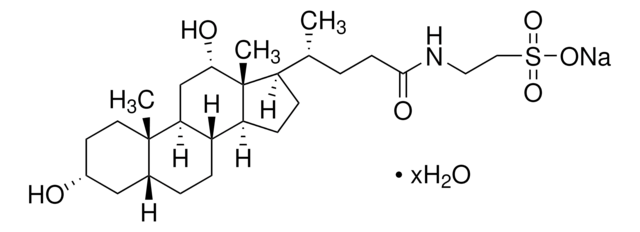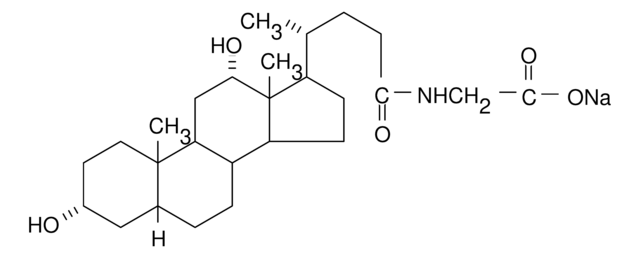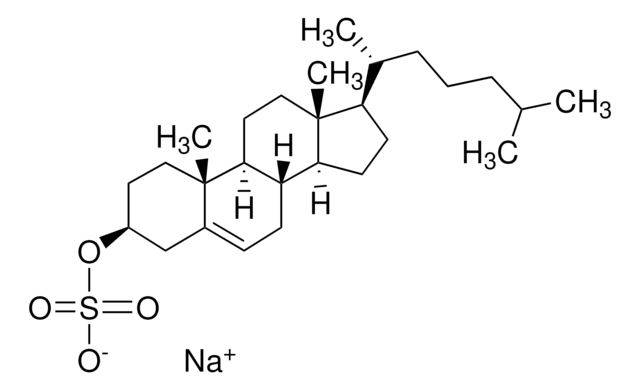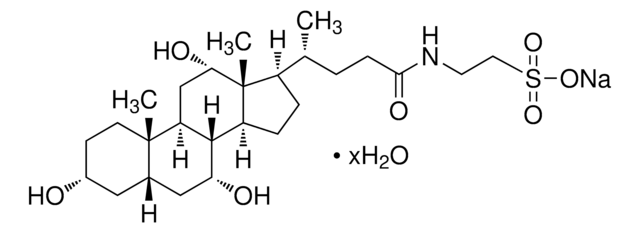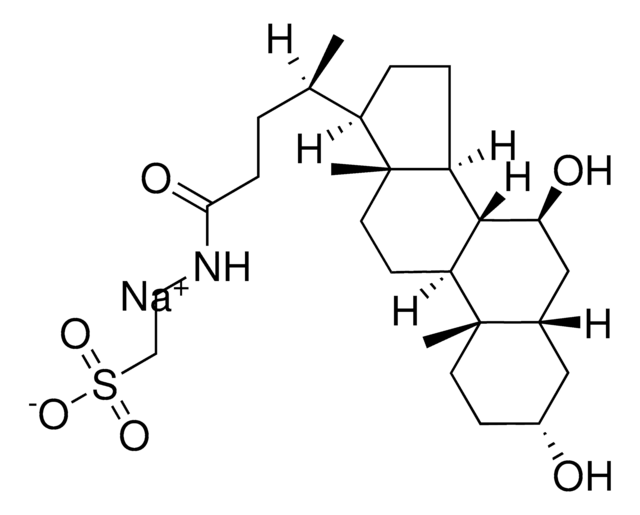50534
Glycochénodésoxycholate de sodium
≥97.0% (TLC)
Synonyme(s) :
Acide glycochénodésoxycholique sodium salt, N-(3α,7α-dihydroxy-24-oxocholan-24-yl)glycine sodium salt, N-(carboxyméthyl)amide de l'acide 3α,7α-dihydroxy-5β-cholanoïque sodium salt
About This Item
Produits recommandés
Description
anionic
Niveau de qualité
Pureté
≥97.0% (TLC)
Forme
powder
Poids mol.
471.61 g/mol
Technique(s)
protein quantification: suitable
Solubilité
H2O: 50 mg/mL, clear, faintly yellow
Groupe fonctionnel
amide
Chaîne SMILES
[Na+].C[C@H](CCC(=O)NCC([O-])=O)[C@H]1CC[C@H]2[C@@H]3[C@H](O)C[C@@H]4C[C@H](O)CC[C@]4(C)[C@H]3CC[C@]12C
InChI
1S/C26H43NO5.Na/c1-15(4-7-22(30)27-14-23(31)32)18-5-6-19-24-20(9-11-26(18,19)3)25(2)10-8-17(28)12-16(25)13-21(24)29;/h15-21,24,28-29H,4-14H2,1-3H3,(H,27,30)(H,31,32);/q;+1/p-1/t15-,16+,17-,18-,19+,20+,21-,24+,25+,26-;/m1./s1
Clé InChI
AAYACJGHNRIFCT-YRJJIGPTSA-M
Vous recherchez des produits similaires ? Visite Guide de comparaison des produits
Catégories apparentées
Autres remarques
Code de la classe de stockage
11 - Combustible Solids
Classe de danger pour l'eau (WGK)
WGK 3
Point d'éclair (°F)
Not applicable
Point d'éclair (°C)
Not applicable
Équipement de protection individuelle
Eyeshields, Gloves, type N95 (US)
Certificats d'analyse (COA)
Recherchez un Certificats d'analyse (COA) en saisissant le numéro de lot du produit. Les numéros de lot figurent sur l'étiquette du produit après les mots "Lot" ou "Batch".
Déjà en possession de ce produit ?
Retrouvez la documentation relative aux produits que vous avez récemment achetés dans la Bibliothèque de documents.
Les clients ont également consulté
Notre équipe de scientifiques dispose d'une expérience dans tous les secteurs de la recherche, notamment en sciences de la vie, science des matériaux, synthèse chimique, chromatographie, analyse et dans de nombreux autres domaines..
Contacter notre Service technique